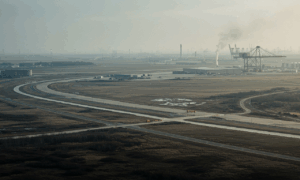Venturing into the world of investments can be a powerful way to grow your wealth, potentially funding significant life projects like a home renovation or new construction. However, navigating this landscape without a clear understanding can lead you straight to the worst way to invest your money. This article is designed to illuminate common investment mistakes, helping you safeguard your capital and make informed decisions, ensuring your financial goals, including those ambitious building projects, remain on track. We will explore pitfalls to avoid and strategies to adopt for a more secure financial future.
The Lure of “Get Rich Quick” Schemes
One of the most detrimental approaches to investing is falling for schemes that promise extraordinarily high returns with little to no risk. These are often the hallmark of the worst way to invest your money.
- Unsustainably High Returns: If an investment promises returns that seem too good to be true, they usually are. Legitimate investments grow over time; they don’t typically double your money overnight.
- Pressure to Invest Quickly: Scammers often create a false sense of urgency, pressure you to invest immediately before you miss out. Take your time to research any opportunity.
- Lack of Transparency: Vague explanations about how the investment generates returns or an unwillingness to provide detailed documentation are major red flags.
Remember, building wealth, much like a construction project, requires a solid foundation and patience. Quick fixes in finance often lead to significant losses, jeopardizing funds you might have earmarked for important projects.
The Peril of Emotional Investing
Allowing emotions like fear or greed to dictate your investment decisions is a classic mistake. Emotional investing can lead to buying high out of a fear of missing out (FOMO) or selling low during market downturns out of panic.
Successful investing requires a rational approach, often detached from the daily noise of the market. If you’re saving for a major renovation, for instance, a sudden market dip might tempt you to pull out funds prematurely, potentially crystallizing losses and delaying your project. Develop a long-term strategy and stick to it, resisting the urge to make impulsive moves based on short-term market fluctuations. Consider exploring our resources on investment strategies to build a more resilient portfolio.
The Danger of No Diversification
Putting all your investment capital into a single asset or a very narrow range of assets is akin to betting your entire construction budget on a single, unproven contractor. This lack of diversification is a significant risk. If that one investment performs poorly, your entire portfolio suffers.
Diversification involves spreading your investments across various asset classes (stocks, bonds, real estate, etc.), industries, and geographic regions. While it doesn’t guarantee profits or protect against all losses, it can help mitigate risks. A well-diversified portfolio is more resilient to shocks in any single area, providing a more stable path for growing your funds, whether for retirement or that dream extension.

Ignoring Due Diligence and Research
Investing without adequate research, or due diligence, is like starting a major renovation without checking your contractor’s references or understanding the building codes. You wouldn’t pour a foundation without knowing the soil conditions, so why invest your hard-earned money without understanding the underlying asset?
Before committing funds:
- Understand the Investment: What is it? How does it generate returns? What are the risks involved?
- Research the Company/Asset: Look into the company’s financial health, management team, and market position if investing in stocks. For other assets, understand their fundamentals.
- Read the Fine Print: Be aware of all terms, conditions, and especially the fees associated with the investment.
Taking the time to research can save you from costly mistakes and ensure your capital is working effectively towards your financial goals, such as accumulating funds for a significant home improvement project. Skipping this step is a fast track to experiencing the worst way to invest.
The Hidden Cost of High Fees
Investment fees might seem small on the surface, but they can significantly erode your returns over time, especially with long-term investments. This is often an overlooked aspect, yet high fees can turn a potentially good investment into a poor one.
Be vigilant about understanding all associated costs:
- Management Fees: Charged by fund managers.
- Trading Commissions: Costs for buying or selling investments.
- Advisory Fees: If you use a financial advisor.
- Hidden Costs: Sometimes embedded within complex products.
Always compare fees across similar investment products. Even a 1% difference in annual fees can mean tens of thousands of dollars less for your retirement or that major construction project over several decades.
Investing Money You Can’t Afford to Lose
A cardinal sin in investing is using money that you need in the short term or for essential expenses. This includes funds specifically set aside for the down payment on a construction project, or money needed for living expenses.
Never invest critical funds in volatile assets. The risk of losing this capital, especially if the investment is speculative, can have devastating consequences, potentially derailing your construction plans or forcing you to sell at a loss if you need the money unexpectedly. Ensure you have a robust emergency fund in easily accessible savings before you consider investing surplus capital. Your savings strategy should be distinct from your investment strategy.
Trying to Time the Market
Many investors, both novice and experienced, fall into the trap of trying to time the market – attempting to buy at the absolute bottom and sell at the absolute top. While it sounds appealing, it’s notoriously difficult to do consistently, even for professionals.
Market movements are influenced by a myriad of unpredictable factors. Attempting to perfectly time your entries and exits often leads to missed opportunities or buying/selling at inopportune moments. A more sustainable approach is ‘time in the market’ rather than ‘timing the market.’ Consistent, long-term investing, aligned with your financial goals (like saving up for a future renovation), generally yields better results than sporadic attempts to predict market peaks and troughs.
Not Having a Clear Investment Plan or Goals
Investing without a clear plan is like embarking on a construction project without blueprints. You might end up somewhere, but it’s unlikely to be where you intended. Your investment strategy should be directly linked to your financial goals, timeframe, and risk tolerance.
Ask yourself:
- What are you investing for? (e.g., retirement, a down payment for a new build in 5 years, funding a major renovation in 2 years)
- What is your investment horizon? (Short-term, medium-term, long-term)
- How much risk are you comfortable taking?
Having clear answers to these questions will help you choose appropriate investments and avoid making decisions that are not aligned with your objectives. This is crucial if you’re investing funds that will eventually be used for a significant project, as the risk profile for such funds should be carefully managed.
The Pitfall of Uninformed DIY Investing vs. Seeking Guidance
While Do-It-Yourself (DIY) investing platforms have made it easier than ever to invest, going it alone without sufficient knowledge can be risky. Understanding market dynamics, financial instruments, and risk management is crucial. If you are managing funds for a substantial future expense, like a major renovation, mistakes can be particularly costly.
If you find the world of finance and investing overwhelming, or if you’re dealing with significant sums, it may be prudent to seek guidance. When doing so, ensure you engage with professionals who have demonstrable experience and a transparent fee structure. They can help you develop a personalized investment strategy aligned with your specific needs, such as growing a fund for your upcoming construction project, and help you avoid common pitfalls. However, the ultimate responsibility for your financial decisions always rests with you.
Conclusions
Avoiding the worst way to invest your money boils down to education, discipline, and a clear strategy. By steering clear of get-rich-quick schemes, managing emotions, diversifying appropriately, conducting thorough research, being mindful of fees, and investing only what you can afford to lose from your surplus, you significantly improve your chances of financial success.
Remember, sound investment practices are crucial, especially when you have significant financial goals like funding a construction or renovation project. A well-thought-out investment approach can help grow your capital, bringing those projects closer to reality, rather than derailing them through avoidable mistakes.
Frequently Asked Questions (FAQ)
- Q1: What is the single biggest investment mistake people make?
- A: While many mistakes are detrimental, one of the most common and damaging is investing without a clear plan or understanding of what you’re investing in. This often encompasses other errors like chasing hot tips, not doing due diligence, or investing emotionally. A lack of strategy is a surefire way to make poor decisions, especially if those funds are earmarked for significant projects like renovations.
- Q2: How can I avoid emotional investing when markets are volatile, especially if I’m saving for a big project?
- A: To avoid emotional investing, especially with funds for a project, focus on your long-term goals and your pre-defined investment strategy. It helps to have a diversified portfolio, which can cushion against volatility in one sector. Remind yourself that market fluctuations are normal. If you have a shorter timeframe for needing the money (e.g., a renovation in 1-2 years), your investment strategy for those specific funds should be more conservative to protect capital. Avoid checking your portfolio too frequently during turbulent times if it causes anxiety.
- Q3: Is it ever okay to invest in something considered “high-risk”?
- A: Investing in high-risk assets can be part of a well-diversified portfolio, but it should only be done with money you can genuinely afford to lose, and it should represent a small portion of your overall investments. It’s crucial to thoroughly understand the risks involved. If you are saving for a specific, time-sensitive goal like a construction project, high-risk investments are generally not suitable for the bulk of those dedicated funds due to the potential for significant loss.





